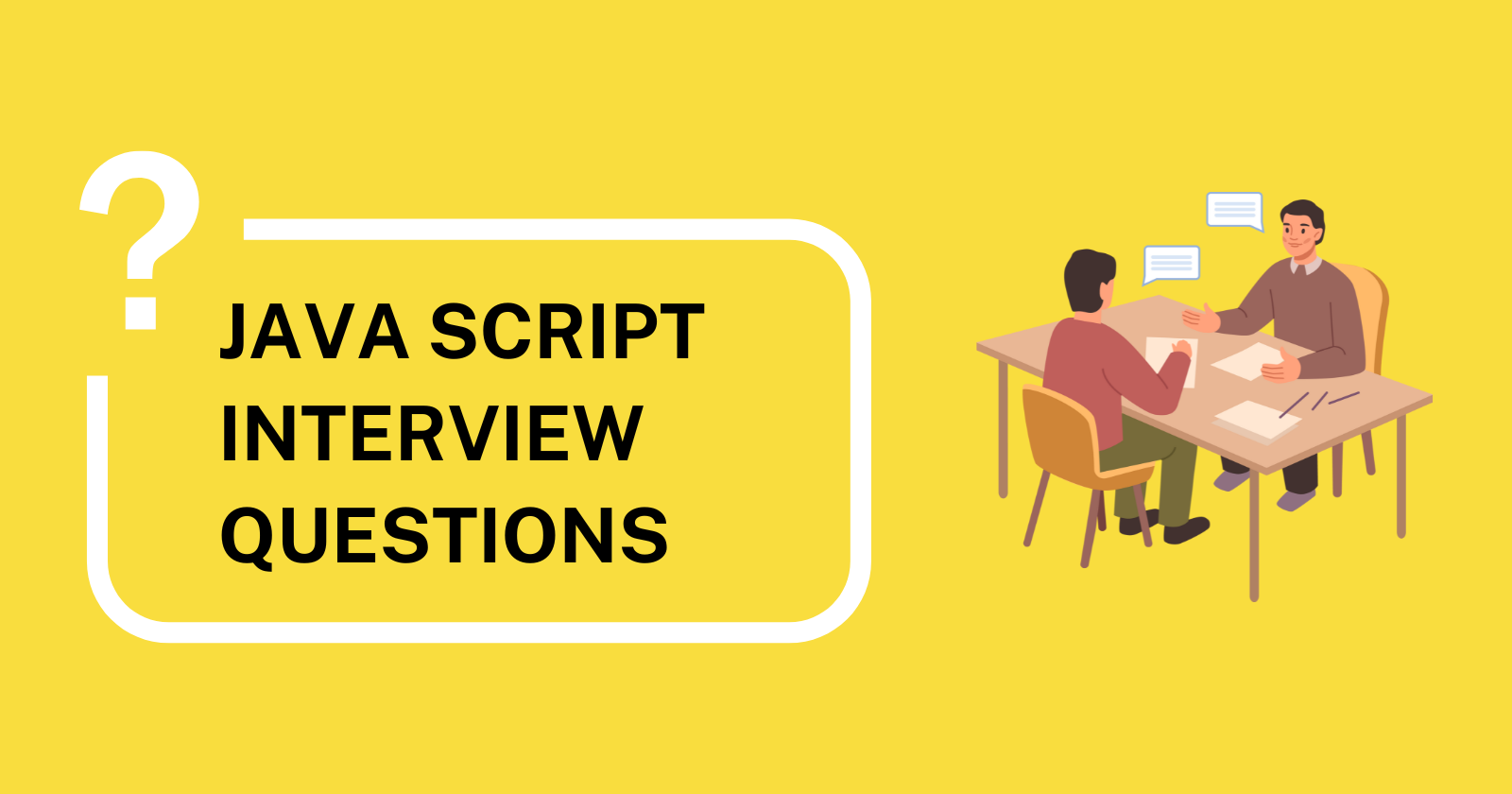Essential JavaScript Interview Questions for 2024
 Shubham Vandara
Shubham Vandara
What is JavaScript?
JavaScript is a high-level, interpreted programming language primarily used for creating interactive web pages.
What are the key features of JavaScript?
Dynamic typing, prototype-based object orientation, first-class functions, and lexical scoping are some key features of JavaScript.
What are the data types in JavaScript?
There are two main categories of data types: Primitive and Reference.
JavaScript is dynamically typed, so you don't need to specify types explicitly, and values can change types during execution.
Primitive data types include numbers, strings, booleans, undefined, null, and symbols.
Numbers represent numeric values.
Strings represent textual data.
Booleans represent true or false values.
Undefined indicates a variable with no value assigned.
Null denotes intentional absence of value, and symbols are unique identifiers.
Reference types include objects, arrays, and functions.
Objects are collections of key-value pairs.
arrays are ordered lists of elements accessed by numeric indices.
Functions are reusable blocks of code.
What is the difference between null and undefined?
Null represents the intentional absence of any object value, while undefined represents the absence of a value or the value has not been assigned yet.
What is the difference between == and === operators?
In JavaScript, the
==operator is used for equality comparison, while the===operator is used for strict equality comparison.\==(Equality Operator): This operator compares only values. It returns
trueonly if the values.\=== (Strict Equality Operator): This operator compares both values and types. It returns
trueonly if the values are equal and of the same type.What is closure in JavaScript?
Imagine you have a function inside another function. The inner function has access to the variables and parameters of the outer function, even after the outer function has finished running. This ability of the inner function to remember and access its outer function's variables is called closure.
function outerFunction() { let outerVariable = "I'm from the outer function"; function innerFunction() { console.log(outerVariable); // Inner function can access outerVariable } return innerFunction; } let myFunction = outerFunction(); myFunction(); // This will print: "I'm from the outer function"This example gives you an idea that,
innerFunctionis defined insideouterFunction. Even afterouterFunctionhas finished executing,innerFunctionstill retains access toouterVariable. That's because of closure.What is a callback function?
A callback function in JavaScript is a function that is passed as an argument to another function and is executed after some operation has been completed. Callback functions are used to handle asynchronous operations such as data fetching, event handling, and other processes that take time to complete.
Explain the concept of hoisting.
Hoisting is a behavior in JavaScript where variable and function declarations are moved to the top of their containing scope during the compilation phase before the code is executed. This means that you can use functions and variables before they are formally declared in the code.
What is the difference between let, const, and var?
Var is function-scoped, and let and const are block-scoped. var variables can be redeclared and reassigned, while let variables can be reassigned but not redeclared, and const variables cannot be reassigned or redeclared.
Explain the difference between function declaration and function expression.
Function declarations are hoisted, meaning they are available before the code executes.
Function expressions are not hoisted and are available only after the interpreter reaches the line of code where they are defined.
What are Arrow functions in JavaScript?
Arrow functions are a concise way to write anonymous functions in JavaScript. They have a shorter syntax compared to traditional function expressions and do not bind their own
this,arguments,super, ornewkeyword.What are Template Literals in JavaScript?
Template literals are a way to create strings in JavaScript using
backticks (``)instead ofsingle ( ' )ordouble ( " )quotes. They support interpolation, allowing you to embed expressions and variables directly within the string.What is a Destructuring assignment in JavaScript?
Destructuring assignment is a syntax that allows you to extract values from arrays or objects and assign them to variables in a concise way. It can also be used with function parameters to extract values from objects passed as arguments.
What is a promise in JavaScript?
A promise is an object representing the eventual completion or failure of an asynchronous operation.
Promises represent this asynchronous value that eventually will be resolved or rejected. There are 3 stages.
Pending
Resolved
Rejected
A promise is a returned object to which you attach callbacks instead of passing callbacks into a function.
What is the async/await feature in JavaScript?
A newer and cleaner syntax for working with async code.
Async
Async functions always return a promise. If the function returns a value, the promise will be resolved. If the function throws an exception, the promise will be rejected.
Await
We can only use the await keyword inside of functions declared with async. await will pause the execution of the function waiting for a promise to be resolved.
What is the Map object in JavaScript?
The Map object is a collection of key-value pairs where keys can be of any type. It allows you to store and retrieve data based on keys and preserves the insertion order of the elements.
What is the Set object in JavaScript?
The Set object is a collection of unique values where each value can occur only once. It provides methods for adding, removing, and checking for the presence of elements.What is a higher-order function in JavaScript?
A higher-order function is a function that takes one or more functions as arguments or returns a function as its result. It enables functions to be used as values.
Explain this keyword in JavaScript.
This refers to the object to which a function or method belongs, depending on how the function is called. It can change its value based on how a function is invoked.
Subscribe to my newsletter
Read articles from Shubham Vandara directly inside your inbox. Subscribe to the newsletter, and don't miss out.
Written by

Shubham Vandara
Shubham Vandara
Hey, I'm Shubham Vandara, a web developer passionate about crafting engaging digital experiences. My toolbox includes HTML, CSS, JavaScript, React, Node.js, Bootstrap, Tailwind, and Java. From responsive layouts to robust server-side applications, I love exploring the endless possibilities of technology. Join me as we dive into the ever-evolving world of web development!